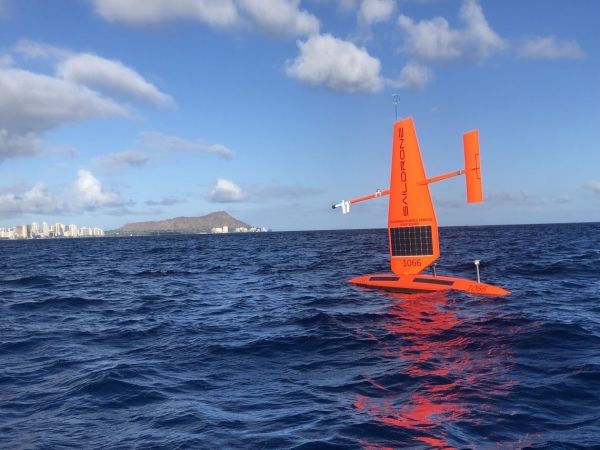Conditions in the tropical ocean affect weather patterns worldwide. The most well-known examples are El Niño or La Niña events, but scientists believe other key elements of the tropical climate remain undiscovered.
In a study recently published in Geophysical Research Letters, scientists from the University of Washington and NOAA’s Pacific Marine Environmental Laboratory use remotely-piloted sailboats to gather data on cold air pools, or pockets of cooler air that form below tropical storm clouds.
“Atmospheric cold pools are cold air masses that flow outward beneath intense thunderstorms and alter the surrounding environment,” said lead author Samantha Wills, a postdoctoral researcher at the Cooperative Institute for Climate, Ocean and Ecosystem Studies. “They are a key source of variability in surface temperature, wind and moisture over the ocean.”
The paper is one of the first tropical Pacific studies to rely on data from Saildrones, wind-propelled sailing drones with a tall, hard wing and solar-powered scientific instruments. Co-authors on the NOAA-funded study are Dongxiao Zhang at CICOES and Meghan Cronin at NOAA.
Read more at University of Washington
Image: Saildrone uncrewed surface vehicles (USVs), like the one pictured here, made measurements of atmospheric cold pools in remote regions of the tropical Pacific. (Photo Credit: Saildrone, Inc.)


